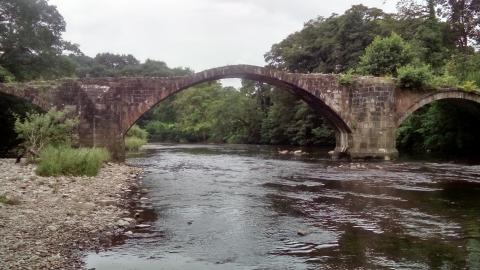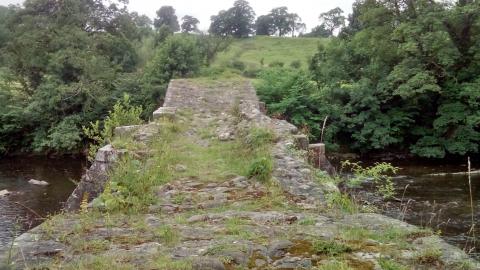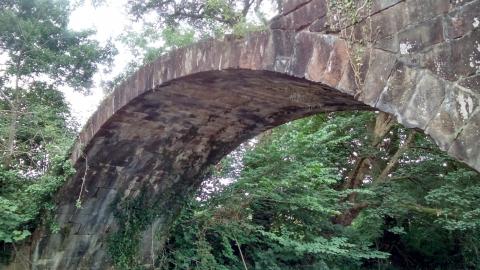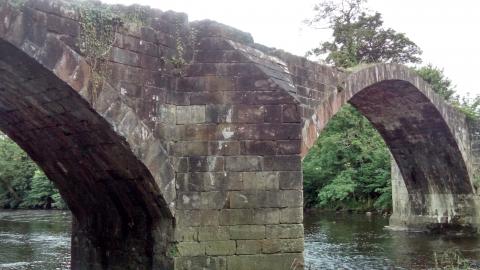Cromwell's Bridge or Brandywine Bridge

This morning I fulfilled one of my ambitions. I set off early to speak at Knowle Green's morning service allowing enough time to stop by 'Cromwell's Bridge'. If one takes the road out of Clitheroe over Eddisford Bridge without turning off, you'll travel through the pretty villages of Great Mitton and Hurst Green. When travelling over the Hodder, looking left, you'll spot a ruined bridge just a few yards further down stream. Unusually for a ruined bridge, it still successfully spans the river.
Although built in 1561-2, it is named after the great general as his 8000 strong army crossed it in 1648 on his way from Skipton to meet the royalist Scots at Preston. It is a narrow bridge; I'm guessing that cavalry would pass no more than two abreast at a push and infantry no more than three. Legend says that Oliver dismantled the parapets which so hindered the troops' movement.

He wrote to Parliament claiming to have held a council of war at the bridge, which he mistakenly described it as 'Hodder Bridge over Ribble'. It is of course Hodder Bridge over Hodder; I think we can forgive him this mistake as he wasn't a local man. He must have been nervous. The bridge is so narrow that his troops would have been vulnerable, and they would have been amassing on either side like blood trying to pass through a cholesterol-lined artery. Lancashire was one of the most Catholic counties in England as well as the most Presbyterian place outside London- there were few middling, temperate sort. Cromwell's army of Independents (Congregationalists) were not altogether welcomed by the suspicious Puritan locals, some of whom chose to fight with their fellow Presbyterian Scots. The Catholic owners and tenants of nearby Stonyhurst would have been even less pleased to see them pass by.

I managed to find a mud path down to the river from the current, wider bridge dating from 1819. Apprehensive of tripping over some root or stone and muckying my linen suit as I descended to the water, I was stung just the once by a nettle which I deem to be a bargain under the circumstances. There is even a way of climbing onto the old bridge and walking across it, though the loose stones and absence of a parapet render it less than safe.
Researchers from nearby Stonyhurst College claim that JRR Tokien, author of The Hobbit and Lord of the Rings, knew the area well. He sent one of his sons there for his schooling and some suggest the Shire's Brandywine Bridge is based upon Cromwell's Bridge. Who knows? Most places with some link to Tolkien fancy themselves as one of the great author's inspirations.
I cannot imagine Cromwell and his Puritan generals not beginning the war council held here without prayer and an appeal to divine protection. It's interesting to reflect that I stood where those great men spoke with their God. Either way, here is a bridge that is now named after the man who misnamed it, and is ruined and disused, even though it is still technically functioning.

You can read more of Cromwell here .
- Log in to post comments


 Sunday Worship 10.45am & 6.00pm
Sunday Worship 10.45am & 6.00pm